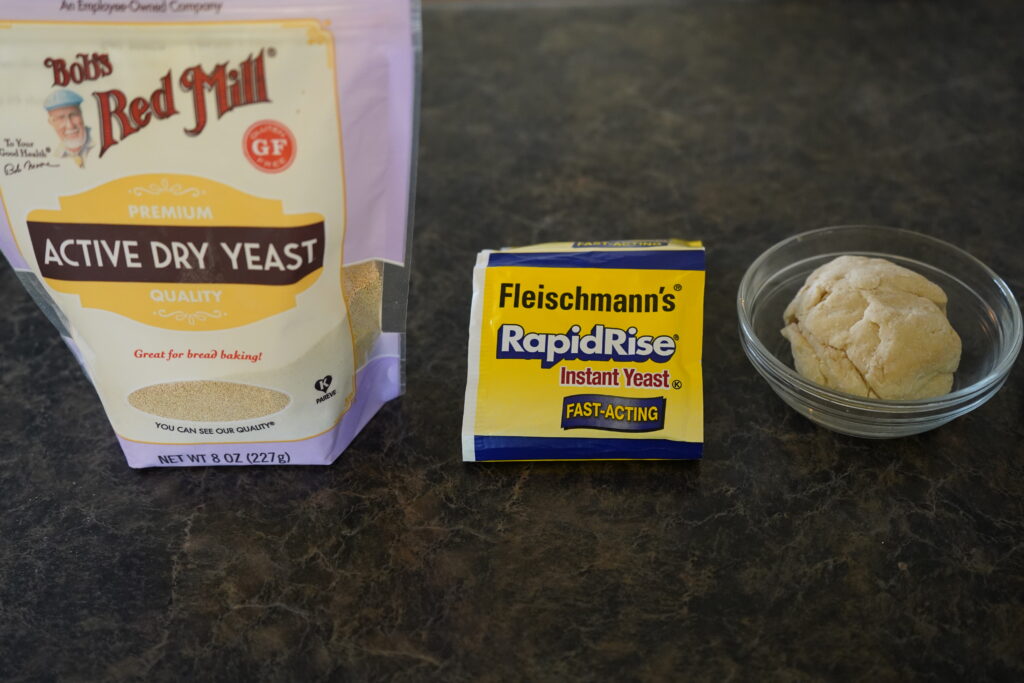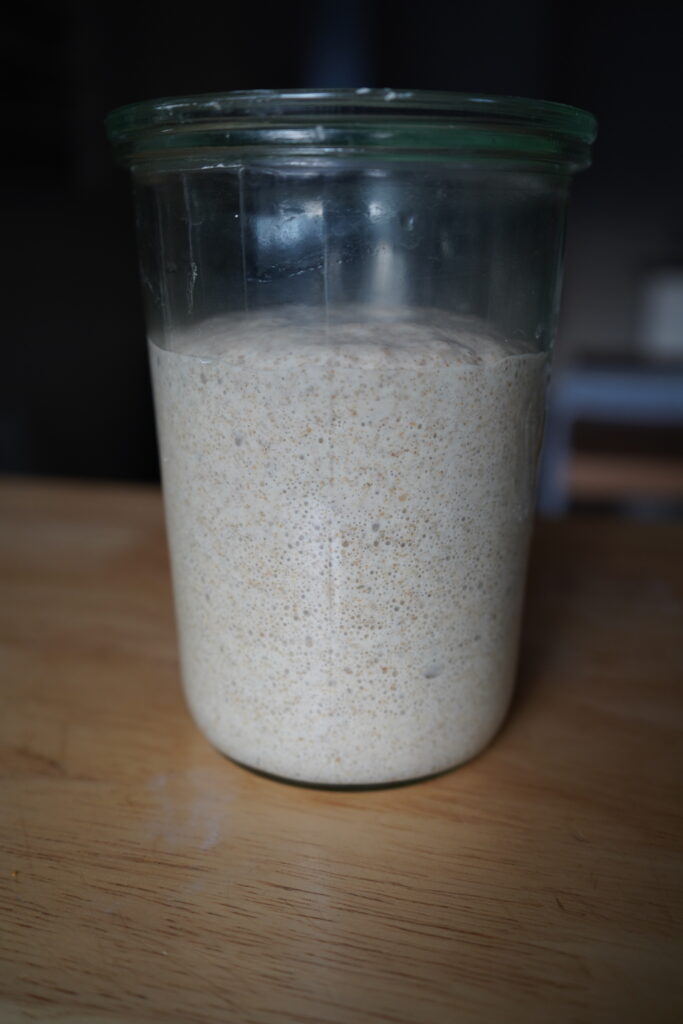Introduction
Yeast is an essential ingredient if you want to make leavened bread, or bread that rises, at home. But what is yeast, exactly? And how is it able to turn flour and water into puffy, delicious bread? In this blog post, we will explore the history of yeast and the different types of common yeast used in baking bread, including sourdough starter.
What is yeast?
Yeasts are single-celled living microorganisms that are classified as fungi. They have been around for hundreds of millions of years, much longer than humans! Although there are at least 1,500 different species of yeast currently recognized, we as bakers are only concerned about the yeast that consume sugar and produce carbon dioxide and alcohol as a byproduct. This yeast is called saccharomyces cerevisiae, which is derived from Latinized Greek and translates to mean “sugar-fungus of beer”. When flour is mixed with water, it creates starches and sugars that the s. cerevisiae yeast feels right at home chowing down on. It ferments these sugars into carbon dioxide and alcohol. The carbon dioxide is what gives bread it’s beautiful rise and airy texture that we all love and crave. While yeast used in baking does produce a small amount of alcohol, it isn’t very much, and it gets removed during the baking process. If your dough smells overly alcoholic, it is likely a sign that it has been over-proofed or over-fermented.
History of yeast used in bread
The first evidence of leavened bread dates back to ancient Egypt. It is likely by accident that some flour mixed with water was left for some time to sit and then was used in the next day’s bread. The result would have been an airy and more complex flavor than the typical flatbreads that the ancient Egyptians were used to eating. Since then, Egyptians learned how to cultivate and maintain their own wild yeast culture to make their unleavened breads, well, leavened. The ancient tradition of cultivating wild yeast to use in baking bread continues to this day and is more commonly known now as sourdough starter.
If you have ever tried to maintain a sourdough starter at home, then you understand that it isn’t just something you can forget about or walk away from. Starter is kind of like a pet…in fact, many people name their starters (including me)! You must remember to feed the hungry little guys every day, there is typically a lot of waste as you discard excess starter, and it makes planning and taking vacations a little difficult. What if you come home and your beloved culture is just…dead? These complications in making bread gave rise to the development of commercialized yeast in different parts of Europe around the late 1700s. It was discovered that if water was removed from yeast by pressing it, then the yeast would remain relatively dormant and did not need to be rigorously maintained. The yeast could be reactivated by simply adding it back into water and flour. Today, three types of commercial yeast are available: instant yeast, active dry yeast, and fresh yeast.
Types of yeast used in baking

Yeast that has been dried and sold can be either instant or active dry yeast. Instant yeast goes by many different names, including bread-machine, rapid-rise, and quick-rise. It can be used instantly right out of the package and does not need to be activated before use. Active dry yeast needs to be activated before using, usually by mixing it with a bit of the flour and water used in the recipe as well as a small amount of sugar to really get it going. This process is called “blooming” the yeast. When the mixture is allowed to sit for a short amount of time, it begins to look frothy and bubbly. That’s when you know it is ready to use. This step can be skipped, but it will result in a slower proof. Proofing is when dough is left to rise over a period of time. Proofing takes longer if active dried yeast is used instead of instant dry yeast.
The other form of commercialized yeast that is available is called fresh yeast, also known as compressed or cake yeast. Fresh yeast does not have all the water removed from it. As such, it has a much shorter shelf life than dried yeast (around two weeks) and must be kept in the fridge. Temperature matters a great deal to yeast. The colder temperature in a typical fridge slows down the activity of yeast by a significant amount so things like fresh yeast and sourdough starter can last much longer in the fridge without having to be discarded, used or maintained. Fresh yeast can be very difficult to find in grocery stores since it has such a short shelf life and dried yeast can easily be used instead. However, using fresher yeast in bread results in a more flavorful product.

The freshest yeast, of course, will be what you cultivate yourself through a sourdough starter. This yeast is not something you can buy at a store, but some bakeries might be willing to give you a portion of their starter if you ask them. Starter is made by leaving water mixed with flour on the counter for a day and then “feeding” it again. It creates an ideal environment for yeast to thrive in. Essentially, you are luring wild yeast found in your environment to come live in the home you prepared for it. That process doesn’t just happen in one day. If you are creating a sourdough starter from scratch, you will need to discard some and add more water and flour every single day. Over the course of two weeks, your starter will become more and more bubbly as yeast and lactobacilli bacteria settle in for the long haul. The picture to the right is my sourdough starter, which I named Ben. Like fresh yeast, sourdough yeast can be put in the fridge which extends the time between feedings.
Overall, there are many different options for what type of yeast to use to leaven your bread. Learning how to interpret and respond to needs in yeasted dough takes time, so stick with it and don’t give up!
